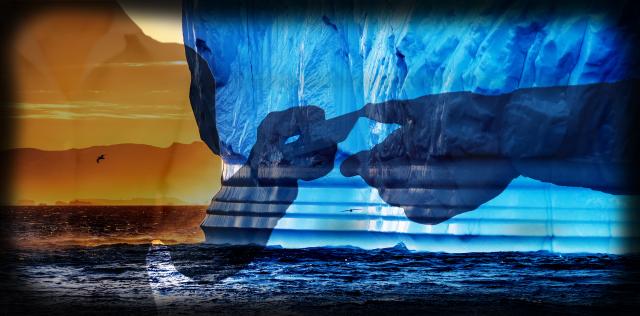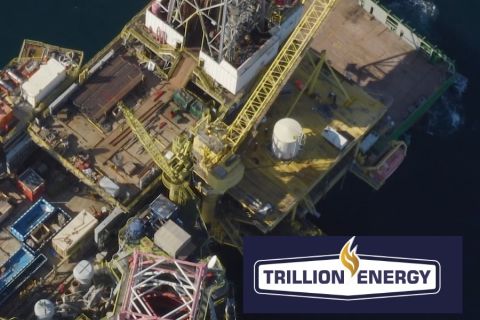
Learn more about Hart Energy Conferences
Get our latest conference schedules, updates and insights straight to your inbox.
[Editor's note: A version of this story appears in the October 2019 edition of Oil and Gas Investor. Subscribe to the magazine here.]
Maybe buying Greenland isn’t such a bad idea.
For those just joining our parallel universe: Sometime in September, the president of the United States, the media, etc., went bananas over weather maps, Sharpies and Hurricane Dorian. That diverted the country’s earlier focus on President Donald Trump’s overtures to buy Greenland.
Alas, the deal was not to be.
On Aug. 20, Trump tweeted that he was canceling a trip to Denmark because “nasty” Prime Minister Mette Frederiksen said she “would have no interest in discussing the purchase of Greenland.”
“I will be postponing our meeting scheduled in two weeks for another time…,” Trump wrote.
Apparently, one sticking point was that Frederiksen is convinced that “Greenland is not Danish. Greenland belongs to Greenland.” About 56,000 people live there, and some of them were also bound to notice.
But chewing over this deal is a lot more enjoyable and somehow feels less ridiculous than the current state of A&D out in oil and gas land.
On Aug. 21, the day after Trump’s first known rebuff to anything Danish-related, Cowen Equity Research produced statistics that show just how unkind the market has been to U.S. upstream M&A.
“Since 2015, E&P companies that engaged in corporate acquisitions have underperformed the XOP by an average of 13% after one year and 20% after two years,” Cowen analyst David Deckelbaum said, referring to the index of oil and gas producers. “Still, investors clamor for M&A to help correct the space.”
Cowen referred to this phenomenon as “M&A rears head, mallet drops.” It may be slightly more accurate to say, “M&A offers head, guillotine drops.”
Consider Callon Petroleum Co.’s July 15 offer to buy Carrizo Oil & Gas Inc. for $3.2 billion. Callon share prices fell 16% by market close that day, Deckelbaum said. On Sept. 9, billionaire hedge fund manager John Paulson fired off a letter to Callon’s board noting that his company, Paulson & Co. Inc., owns 9.5% of the company’s stock and that his 21.6 million shares currently have lost 36% of their value.
Paulson was unable to wrap his mind around a pure-play Permian Basin company buying what he termed “a primarily Eagle Ford producer” and suggested a plan would be for Callon to sell itself.
Indeed, in many corners, deals remain in suspended animation or at least slow motion, with companies hoping to be revived sometime after the malaise has passed.
Others find themselves struggling to make good deals in a bad market. On Sept. 5, Tudor, Pickering, Holt & Co. (TPH) reflected on the stalemate that Chesapeake Energy Corp. finds itself in. With a dynamic deal to buy WildHorse Resource Development Corp. wrapped up in February, the company added a lot more oil production to its largely gassy portfolio for $4 billion. But Chesapeake is still mired in the now years-long Battle of the Balance Sheet, which has left the company “in a precarious position,” TPH said.
Chesapeake may ultimately sell its assets in the Marcellus and Haynesville shales, but with a raucous market, the assets are unlikely to command anything beyond bare-bones PDP value. For the highly leveraged company, sales could ultimately extend the company’s liquidity runway through 2024 but won’t “solve the bigger problem,” TPH said.
Devon Energy Corp., which has been kicking around a second Barnett Shale divestiture since at least September 2018, said it’s been progressing in its sale process. The company expects initial bids by the end of the third quarter and an exit by the end of the year.
Mizuho managing director Paul Sankey said in August that Devon’s future viability still rests, to some degree, on successfully selling the Barnett for enough proceeds to reduce its fixed cost base.
In August, Sankey also addressed the Greenland purchase—the hypothetical distraction-transaction the oil and gas world needed.
“While rich in resource, there is no major mineral production there,” Sankey wrote. “Exports are 90% fish.”
The world’s largest island has strategic value—the Air Force established a base there in 1941. Maybe the rent has gone up.
Greenland is rich in rare-earth metals, which are used in electronics and medical devices.
Minik Rosing, a University of Copenhagen professor, told the Los Angeles Times Greenland’s mineral deposits “are huge, but also unconventional, and require special metallurgy for processing.”
Unconventional? That’s our specialty.
Recommended Reading
Deepwater Roundup 2024: Offshore Europe, Middle East
2024-04-16 - Part three of Hart Energy’s 2024 Deepwater Roundup takes a look at Europe and the Middle East. Aphrodite, Cyprus’ first offshore project looks to come online in 2027 and Phase 2 of TPAO-operated Sakarya Field looks to come onstream the following year.
E&P Highlights: April 15, 2024
2024-04-15 - Here’s a roundup of the latest E&P headlines, including an ultra-deepwater discovery and new contract awards.
Trio Petroleum to Increase Monterey County Oil Production
2024-04-15 - Trio Petroleum’s HH-1 well in McCool Ranch and the HV-3A well in the Presidents Field collectively produce about 75 bbl/d.
Trillion Energy Begins SASB Revitalization Project
2024-04-15 - Trillion Energy reported 49 m of new gas pay will be perforated in four wells.
Exxon Ups Mammoth Offshore Guyana Production by Another 100,000 bbl/d
2024-04-15 - Exxon Mobil, which took a final investment decision on its Whiptail development on April 12, now estimates its six offshore Guyana projects will average gross production of 1.3 MMbbl/d by 2027.






